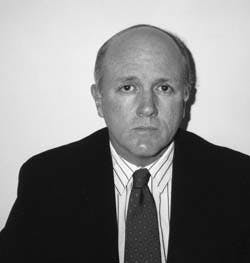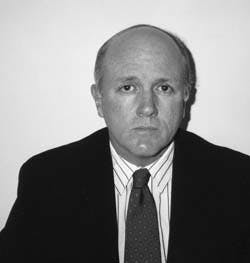MACRO EXPLORATION MODELING: A PRAGMATIC, MULTIDISCIPLINARY TEAM PROCESS
John Q. Belt Jr., Gary K. Rice
GeoFrontiers Corp.
Dallas
The costs associated with finding oil and gas will continue to increase as we move into the 21st century. Since no universal panacea exits for consistently locating oil and gas, the new frontier for 21st century explorationists will be to seek systematic methods that carefully valuate yield versus costs.
Our concepts are embodied in a system called Macro Exploration Modeling or MEM, which was originally developed to show the proper application of near-surface geochemical methods in exploration. We have expanded the concept into a universal model, integrating the various exploration tools and phases, and culminating with two basic exploration decisions or output pathways.
MEM involves three basic criteria:
- risk reduction management,
- capital budgeting and costs justification, and
- pragmatic exploration phases.
MEM also promotes synergistic involvement between all members of the exploration team: geologists, geophysicists, geochemists, service contractors, and management. Macro modeling using a multidisciplinary team process:
- Allocates responsibilities, duties, and time frames for each member of the exploration team from "day one."
- Determines specific tools for each input phase.
- Provides Information Development from Evaluation and Assessment Stages (Ideas).
- Allocates and justifies costs for each input phase and Ideas level to determine budget requirements.
MEM is divided into three parts:
- Input phases-tools,
- Information Development from
Evaluation and Assessment Stages (Ideas), and
- Exploration output pathways of two basic types: conventional and pragmatic. Figs. 1 and 2 show C and P output pathways.
INPUT PHASES AND IDEAS
Phase I, surface & subsurface geological information.
Phase I information ranges from qualitative to more specific data, depending on availability. Information sources include library or speculative data such as electric logs, seismic surveys, subsurface maps, satellite imagery, and geochemical data. Qualitative information includes material on regional basin types, associated paleodepositional environments and facies, regional strike and dip, and possible traps, which are generally available for many areas.
This information is channeled into Ideas and the C or P pathway selected. This information develops the initial, basic geological model for the prospect area.
PHASE II, RECONNAISSANCE DATA
Phase II involves collecting reconnaissance data. Example reconnaissance data tools include: headspace, probe soil gas, radiometrics, magnetics, airborne techniques, gravity, landsat, and micro-magnetics. Reconnaissance data should:
- Indicate thermogenic hydrocarbons at depth.
- Delineate prospect versus nonprospect areas.
Reconnaissance data are input into Ideas for evaluation and assessment, and the C or P pathway selected. Most important, Phase II reconnaissance information should target areas of interest for leasing and the higher-cost input tools of Phase III.
PHASE III, DETAILED PROSPECT DATA
Phase III involves a much larger data set, multiple tools, and increased detail. The primary tools are geophysical (2D and 3D seismic) and geochemical (acid extraction, fluorometry, capillary GC, and deeper soil gas analysis). Phase III requires individuals with multidisciplinary backgrounds, experience, and expertise to properly integrate and interpret the data into viable predictive information. Deriving maximum information from modeling at this Ideas level is a complex process requiring:
- Geochemical maps for overlaying seismic sections and subsurface geological maps
- Comparing vertical seismic profiles to geochemical profiles
- Integrating horizontal seismic time slices with geochemical contour maps
- Using geochemical analyses to delineate subtle, obscure seismic data features for reprocessing
- Validate fault/fracture zones in the geophysical and geochemical data
- Compare and contrast selected congruent and non-congruent geochemical and geophysical features.
A congruent example would be a defined seismic feature (e.g. fault blocked, roll-over anticline) corresponding with a geochemical concentration anomaly. A non-congruent example would be that same seismic feature without a validating geochemical concentration anomaly. Non-congruent geochemical and seismic features are as important as those showing congruency.
PHASE IV, NEW WELL INFORMATION
Phase IV provides model input based on new well information. Well information input is usually subsurface geological data (e.g., formation depth and thickness). Less common well information includes formation hydrocarbon data associated with depth. The possibility of adding bias or masking the near-surface geochemical signal, determined in Phases II and III, can be evaluated in detail from new well information.
EXPLORATION OUTPUT PATHWAYS
CONVENTIONAL PATHWAYS
Fig. 1 (61512 bytes) shows conventional approaches to decisionmaking. This bound, paradigmatic focus may result from adopting a single exploration methodology, or an exploration team composed primarily of one discipline. On "day one" the team selects the specific input phases, with associated tools and C pathways. These initial decisions are usually less flexible and rigidly structured. Drilling locations are selected based on insufficient information resulting in extreme C1 to high C3 risk.
In pathway C1 the team selects a drilling location based solely on available information, omitting Phase II, reconnaissance data and Phase III, detailed prospect data. In pathway C3 the exploration team determines a drilling location based on Phase II, reconnaissance data-Ideas, omitting Phase III, detailed prospect data. In both cases, the exploration team is willing to accept much higher levels of risk in an effort to cut costs.
Pathway C2 involves the outlay of unnecessary expenses through nonpragmatic job costing. The exploration team omits Phase II, reconnaissance data and proceeds to Phase III, detailed prospect data. In essence, reconnaissance is conducted over the entire prospect using the more expensive tools of Phase III. In summary, C pathways involve:
- Non-pragmatic selection of exploration phases
- Higher levels of risk
- Unnecessary costs
- Less team involvement at the Ideas levels
- The drill option can be exercised after any Ideas level
PRAGMATIC PATHWAY
Fig. 2 (65474 bytes) illustrates a Pragmatic approach to decisionmaking.
The prospect area is evaluated in a progressive sequence. A geological model is developed from Phase I information. If the decision is made to continue, the prospect is evaluated using a Phase II reconnaissance tool.
Depending on the information (Ideas) derived from the reconnaissance data, a second reconnaissance phase may be required prior to making the decision to abandon the prospect or move to Phase III. Pathway P modeling allows multiple passes through the same Input and Ideas levels. If the reconnaissance information indicates prospective areas, the team employs the more detailed tools of Phase III.
After assessing and evaluating the Phase III-detailed prospect data, the team will decide to:
- acquire more detailed data,
- drill,
- abandon, or
- farm out the prospect.
Pathway P has four major advantages.
First, job costing proceeds in a pragmatic, progressive sequence. Costs increase moving from Phase I to Phase III.
Second, under Phase II-reconnaissance-Ideas, areas proving less prospective are eliminated from the exploration program. Third, only reconnaissance areas showing the highest probability for success are selected for leasing and the higher cost input tools of Phase 111. Fourth, the level of risk decreases progressing from Phase I to Phase III. In summary, Pathway P:
- Progressively decreases risk
- Provides pragmatic selection of exploration phases
- Requires more team interaction
- Defines lease areas with the highest probability of success at the reconnaissance level
- Progresses from less to more expensive exploration tools
- The drill option can only be exercised after the Phase III-(Ideas) level.
CONCLUSION
Increasing costs of oil and gas exploration requires teams to carefully evaluate yield versus costs. Budgetary constraints are a major consideration in every program. However, one usually gets what one pays for, and over-extending exploration tools and techniques beyond their limitations invites failure and unjust condemnation of misused tools.
Proper modeling decisions provide the exploration team with a pragmatic, economic based model while at the same time progressively minimizing costs and risk. Every prospect is different, and the model should automatically adapt to different geological conditions and budgetary constraints.
Proper modeling should encourage a multidisciplinary team process from "day one." Responsibilities, duties, and time frames are understood by all members of the exploration team. Capital budgetary requirements are defined and properly allocated before initiating the first phase. If capital constraints require bypassing critical phases, the prudent choice may be postponing the program until additional funds are available.
The success of any model at predicting acceptable results is only as good as:
- The creativity of the team
- The team's ability to hurdle preconceived paradigmatic bias
- Commitment of necessary capital
- Data quality
- Interpretation of data into predictive information (Ideas)
Until the universal panacea for exploration is discovered, the best alternative is to develop and properly apply MEM using a multidisciplinary, team oriented, proactive process to maximize returns within budget constraints.
ACKNOWLEDGMENTS
The authors would like to thank the following individuals for their review and many suggestions in the writing of this article: J. Michael Usseglio, president, Surface Oil & Gas Co.; Robert J. Graebner, president, R. J. Graebner Inc.; and Keith G. Sprague, exploration geologist, Walter Exploration Inc.

